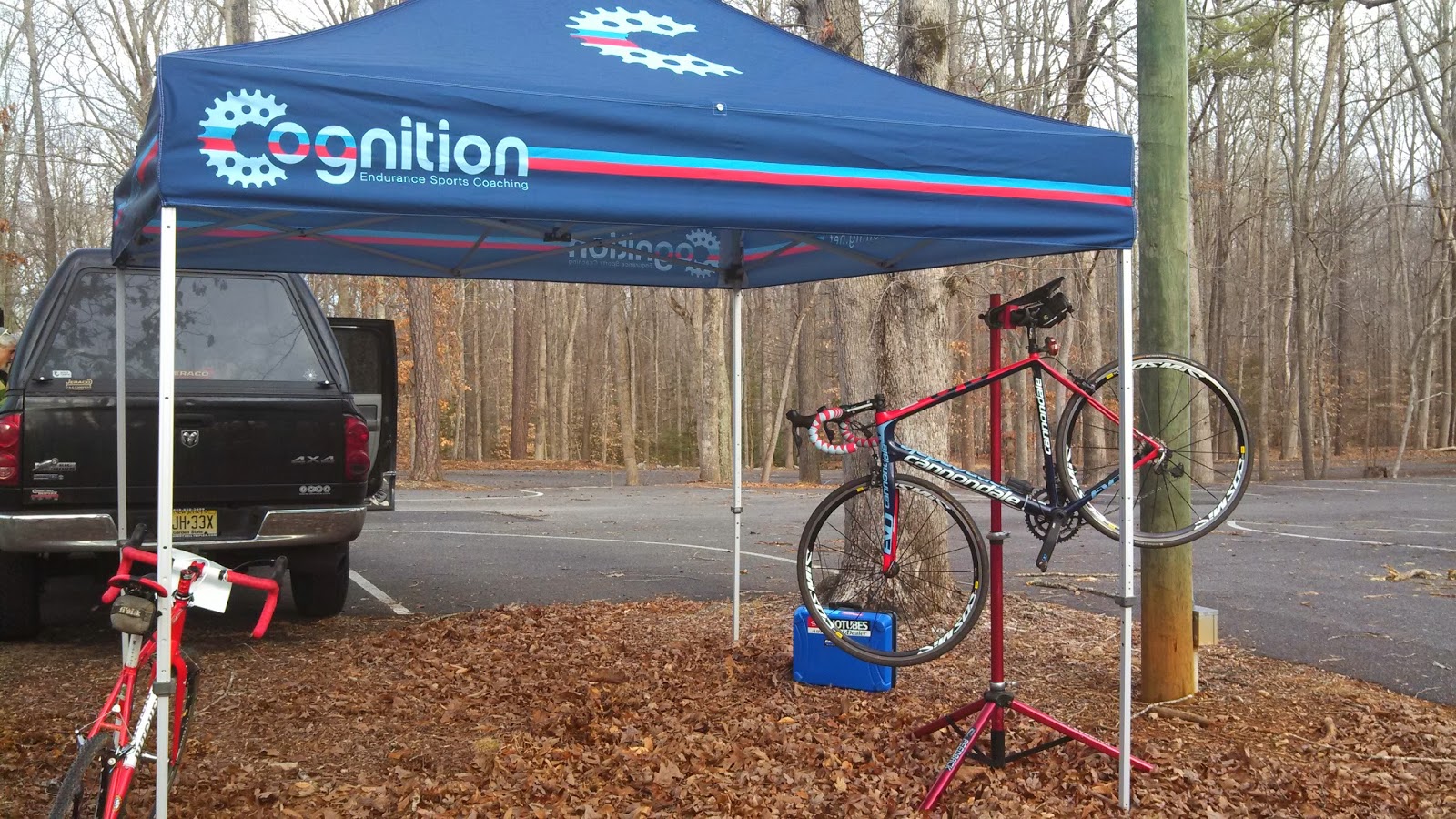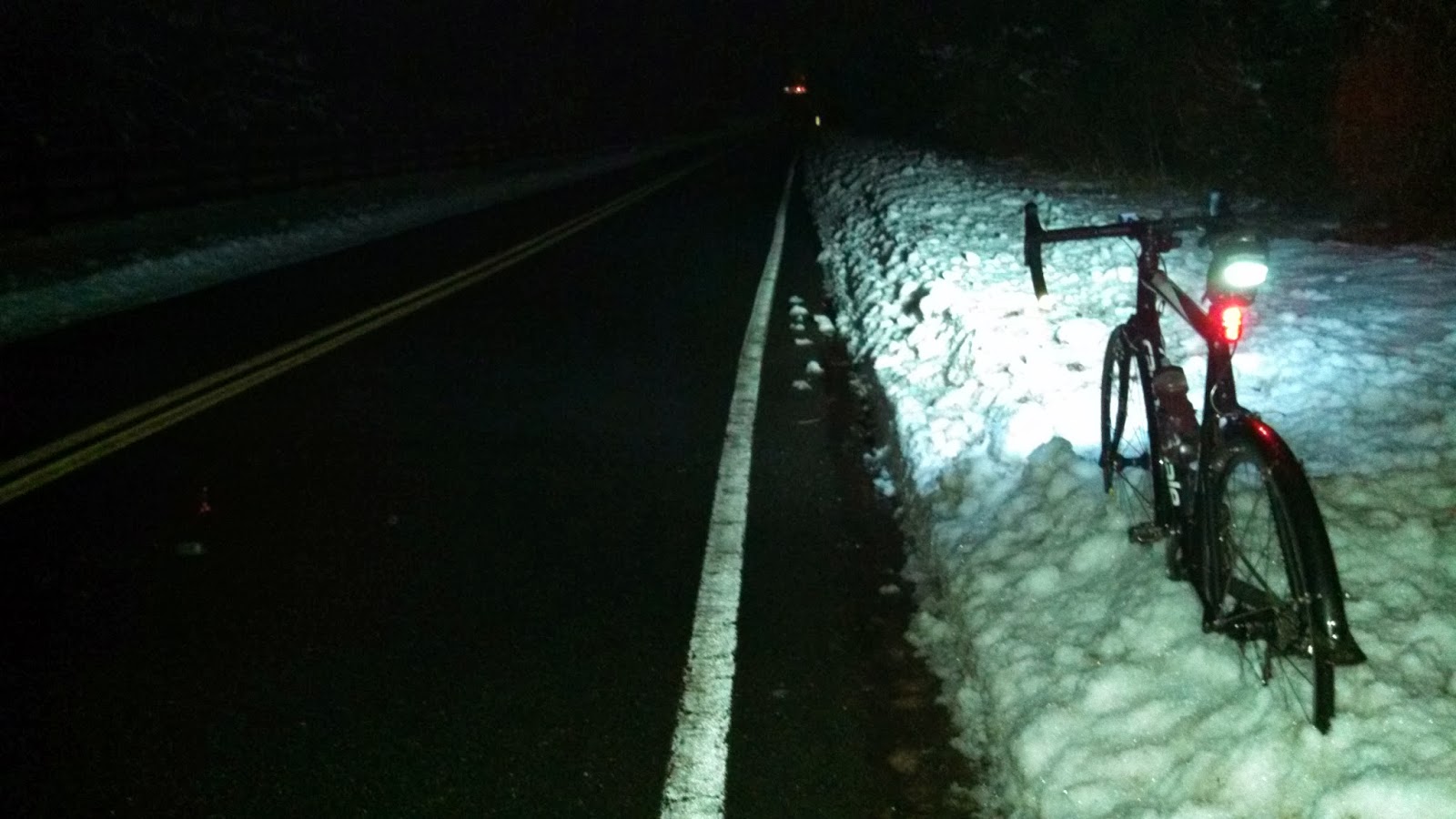In a previous blog post, I wrote about climbing. That prompted a couple questions from you about climbing while seated vs climbing while standing. They were great questions and I've been thinking about them since. I went out on a
climbing mission to demonstrate the pros and cons of seated and standing climbing styles.

I started from Lambertville and did my warm-up towards one of the larger continuous climbs in that area. I've done this climb many times but not repeated with the focus I would be applying during this ride. The climb is 9/10ths of a mile long. Climbing 180 feet at an average grade of 3.8%. Not impressive numbers but certainly enough to provide plenty of discomfort. As I often say, "Relative bumps in the road can do significant damage when ridden at race-pace!"
Interestingly, this climb is steepest at the bottom. This causes riders to dig deep early while being cautious not to get exhausted before the top. As I began, I did not know how many times I would repeat the climb. I planned to do it both seated and standing. Then a mix of both. Here is the portion of the graph containing all off the intervals.
Allow me to explain a few known climbing principles. Climbing while remaining seated is known to be more efficient. While seated, the saddle and bike support your body weight. With more points of contact with the bike, it is easier to balance and maintain a straighter path. When sitting up, you can see the road ahead more comfortably.
When climbing out of the saddle, you have to support all of your body weight on only your hands and feet. The bike becomes less stable as it can now rock side to side between your legs. This rocking motion can influence steering dramatically.
When standing, more muscles are needed to support the increased body weight and maintain balance and control. Those muscles will be calling for oxygen, increasing the demands on your heart. As a result, heart rate increases to provide oxygen to more muscles.
People often argue that your power increases when you stand. That is true BUT...that increase is primarily due to the body mass that is no longer supported by the saddle. Standing alone does not produce greater power. There is simply more of your body mass acting on the power meter.
With that said, you can produce greater power output while standing. As we pedal out of the saddle, we rock the bike from side to side. We counter this motion by pulling on the handlebars with our arms. This motion and the use of our arms provides a greater output. As these additional muscles are relatively small, the increased power output is very short-lived. When we look at power output while standing, we will often see a burst and then a slow decline to nearly the same level as if you were seated. Conversely, heart rate will continue to rise.
Last but not least, there is a time when standing is a good idea regardless of power output. When seated, certain muscles are doing the bulk of the work. Although seated climbing is most efficient, the continuous use of the same muscles will cause fatigue. Different muscles become active when climbing out of the saddle. It is a good idea to get out of the saddle for short periods of time at regular intervals. The muscles used while seated will appreciate the rest. Then return to the saddle and continue.
With all that explanation out of the way, let's return to my intervals. My first attempt (1) was seated and more of a continuation of my warm-up and a recon mission. I picked an exact start point that I would use for each. I got a closer look at the grade changes and to see what my average power would be and how long it would take. I also chose an exact point to finish each interval (a utility pole). I returned to the bottom and noticed my resting heart rate. I wanted to begin each interval at relatively the same HR to allow for a better comparison.
The second attempt (2) was entirely OUT of the saddle. I was thoroughly warmed and just targeted to get to the top briskly. I made a mental note of my average power again. (279 Watts) Here is a little extra that you do not see in the data. My back was screaming at me. Ouch!
For the third attempt (3), I returned to riding entirely seated. I attempted to hit the exact same average power as in the previous standing interval. I went too hard early and was forced to back off as I neared the top to reduce the average power. The result was 282 Watts and some questionable pacing of exertion. "Nah, that isn't good enough!"
I started the fourth (4) with the same plan. Match the average power from the Standing interval. I improved my pacing and hit the exact number as in the Standing interval. Perfect! That is what I wanted to record and review later.
Let's compare intervals (2) and (4) in greater detail. Although very delayed and subjective, heart rate in the graph provides a good indication of my perceived exertion. Notice in (2) how quickly my HR rises. Then, it remains high while showing a slow decline until the final burst at the top. The decline in the middle was necessitated by the early burst. I had to back off a little. As I approach the top, I have only enough for a short burst. If I had not reduced my effort in the middle, there would not have been a burst at the top at all.
In (4), my HR rises much more slowly. Allowing for a continuous increase in exertion. Additionally, I have extra in the tank to put in a longer effort towards the top. Although the line displaying power is erratic, you can see that power is continuously increasing in the second half of the climb. The data does not reveal everything though. I was struggling at a low cadence during the early steeper section. Once beyond that, I was able to settle at a more comfortable cadence and reduce my loses.
After the fourth interval, I was happy that I had created a good comparison between climbing seated vs. standing. For the remaining intervals, I used a mixed strategy to see how I could get to the top quickest. The goal was to stand for the early steeper section. Then, "churn and burn" while seated through the middle of the climb. I would stand towards the end to deplete whatever I had remaining at the top.

For the fifth interval (5), I was too aggressive out of the saddle early. Similar to the earlier interval, I was forced to back off through the middle portion of the climb. Then only had enough left for a short burst at the top. I didn't feel good about that effort and went back down for another.
The last attempt (6) is where I got things right. A less aggressive approach early while standing. Although my HR rises quickly, it does not go as high as the previous attempt. It also does not drop nearly as much in the middle of the climb. The drop in heart during the middle is simple because I sat down. Remember, less muscles are calling for oxygen while seated and HR lessens. Then I have plenty in reserve for a blast towards the top. The time is slightly improved although the power is slightly less. "Power alone does not win races. The result is determined by how we apply our available power." I paced myself better and achieved the best time of the day.
As you approach any climb, consider how you want to apply your available power. Seated climbing is most efficient. There are times when we may be forced to stand. Such as when we run out of gears on a steep grade, when responding to accelerations and attacks in a race, or simply to give muscles a rest. Developing your personal climbing habits can take years. I have seen my own habits change numerous times as I learned and observed others. Never stop looking for ways to improve!





































